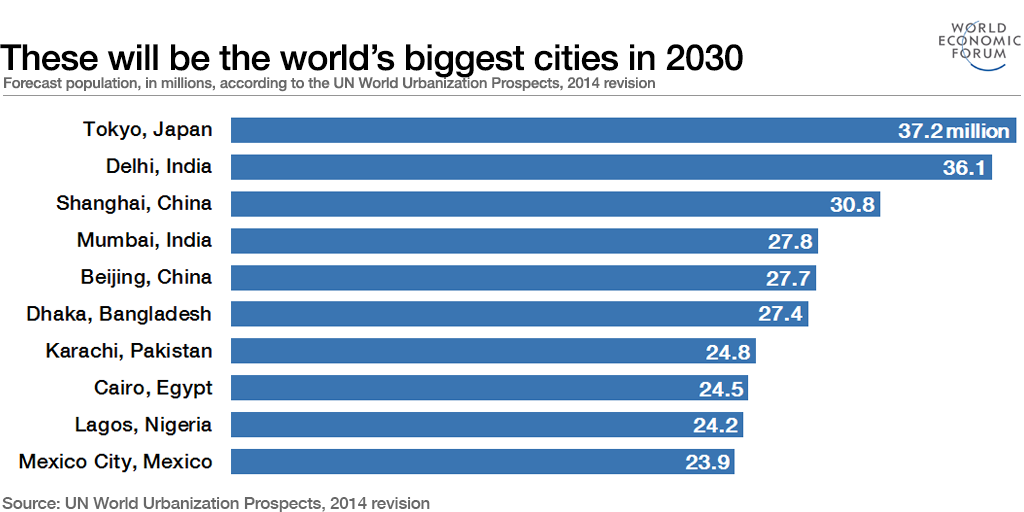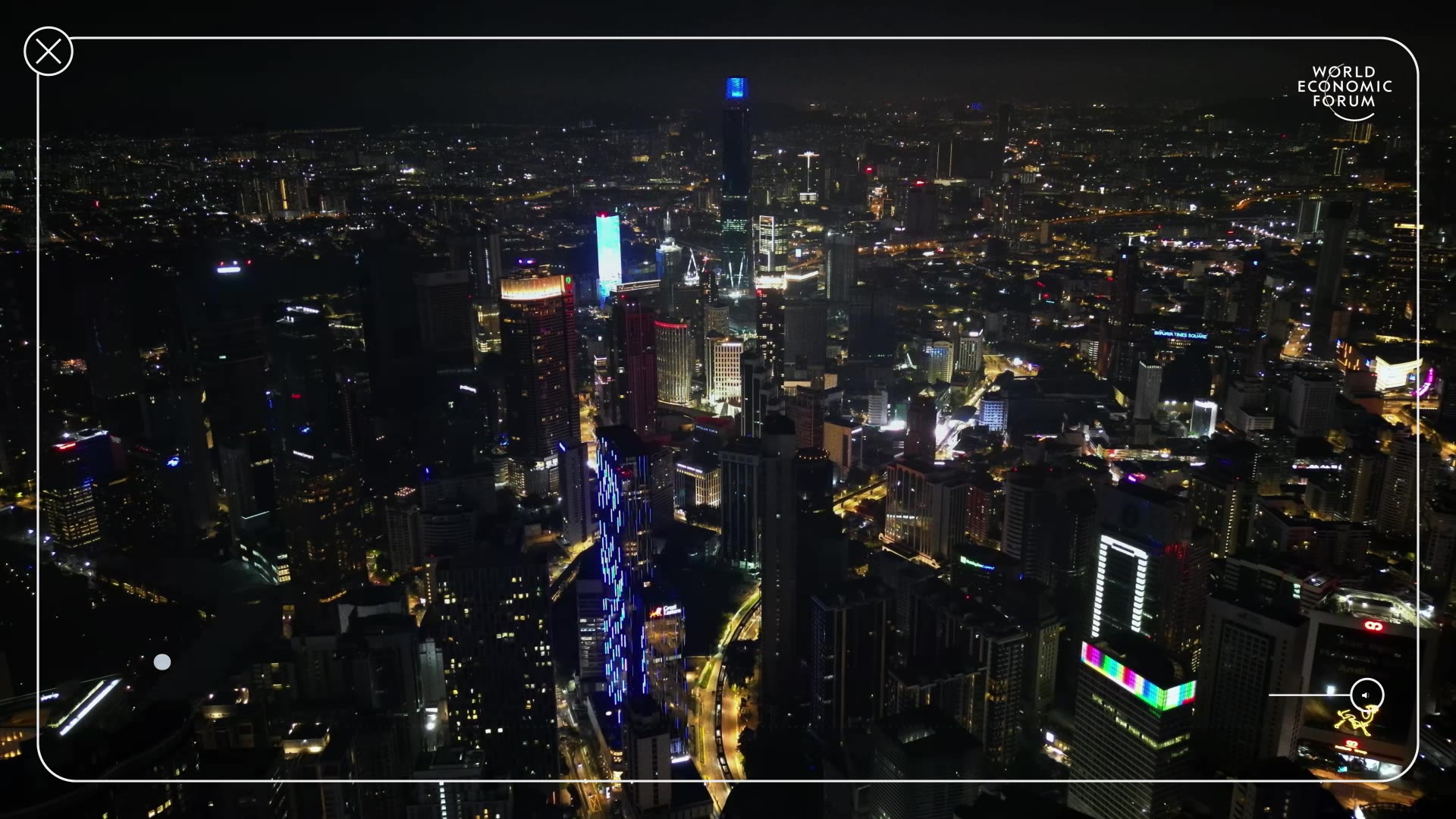The world’s 10 largest cities by 2030

Image: REUTERS/Issei Kato

Get involved with our crowdsourced digital platform to deliver impact at scale
Stay up to date:
Cities and Urbanization
In 1950 it was New York. Today, it’s Tokyo. By 2030? It will be a much bigger Tokyo.
Sixty-five years ago, a population of 12 million was enough to see the Big Apple take the world’s biggest city crown. In just 14 years’ time, Tokyo’s population is forecast to reach 37 million, according to the United Nations.
This would make it the equivalent of the world's 55th biggest country, if you were wondering.
2030’s biggest cities

Delhi is in second place. The Indian city’s population is forecast to top 36 million come 2030. It’s population in 1970? Just 3.5 million.
Shanghai completes the top three, with a predicted population of nearly 31 million.
______________________________________________
Have you read?
These are the world’s most liveable cities
These are Africa’s fastest-growing cities – and they’ll make or break the continent
_____________________________________________
With the exception of Tokyo, the top 10 is dominated by cities in emerging and developing economies. A remarkable change from 1950, as the following chart shows.

Whereas 12.4 million got you the top spot in 1950, by 2030, this would only be good enough for 30th place.
An urbanizing world
The latest UN World Urbanization Prospects reflects the trends seen in the two charts above.
The world’s urban population has grown rapidly since 1950, increasing from less than 750 million to 3.9 billion in 2014. A further 2.5 billion are expected to be added to this by the middle of the century.
The epicentre of this growth? Asia and Africa. These two regions are urbanizing more rapidly than other regions of the world, according to the report.
All of this now means that a majority of the world’s population live in urban areas.

Don't miss any update on this topic
Create a free account and access your personalized content collection with our latest publications and analyses.
License and Republishing
World Economic Forum articles may be republished in accordance with the Creative Commons Attribution-NonCommercial-NoDerivatives 4.0 International Public License, and in accordance with our Terms of Use.
The views expressed in this article are those of the author alone and not the World Economic Forum.
The Agenda Weekly
A weekly update of the most important issues driving the global agenda
You can unsubscribe at any time using the link in our emails. For more details, review our privacy policy.
More on Urban TransformationSee all
Lisa Chamberlain
April 25, 2024
Victoria Masterson
April 17, 2024
Fatemeh Aminpour, Ilan Katz and Jennifer Skattebol
April 15, 2024
Victoria Masterson
April 12, 2024







